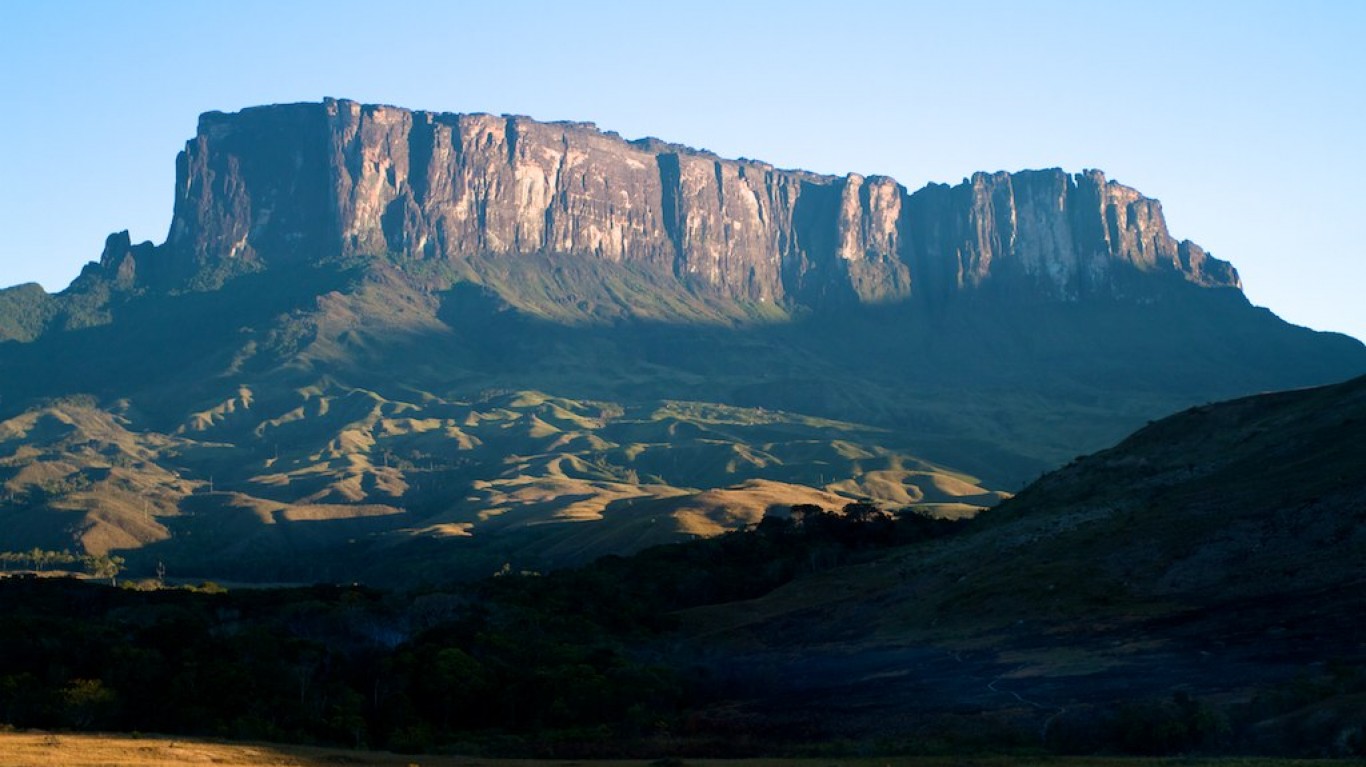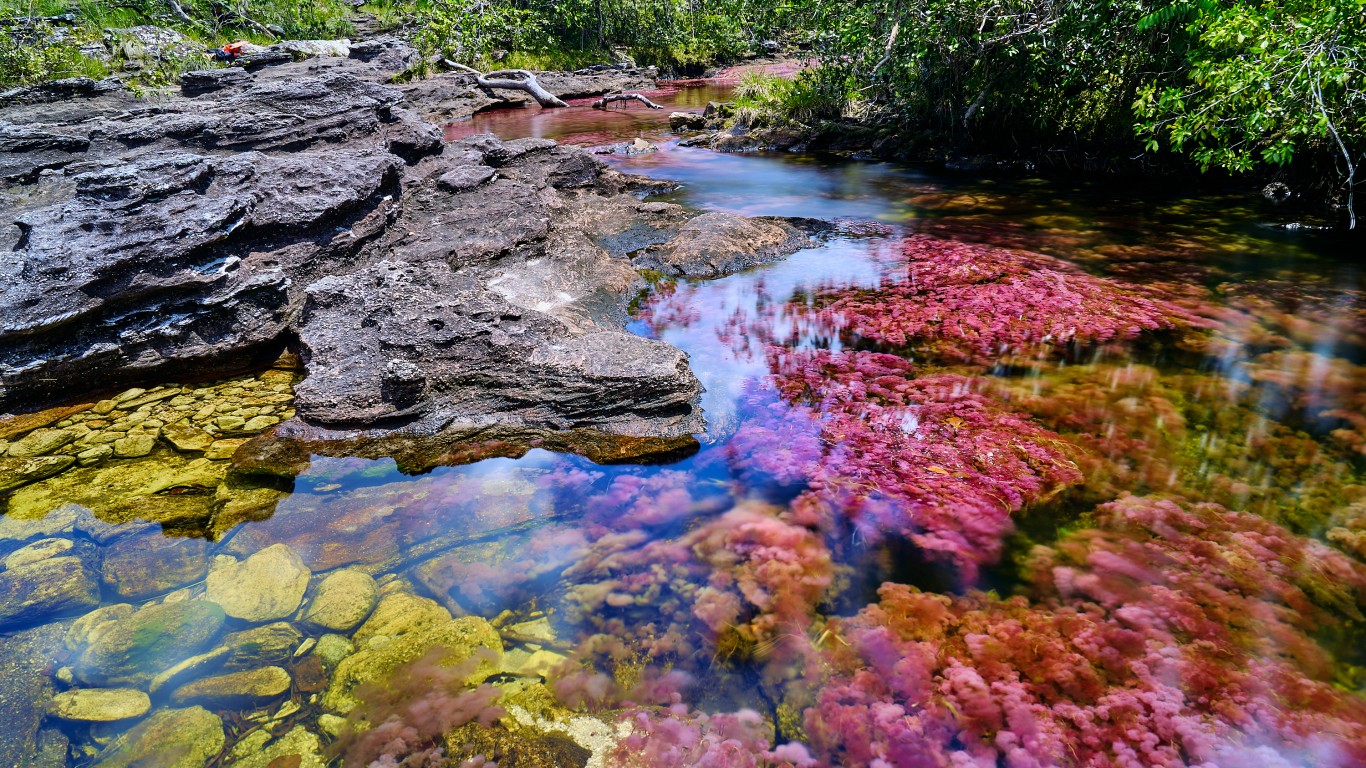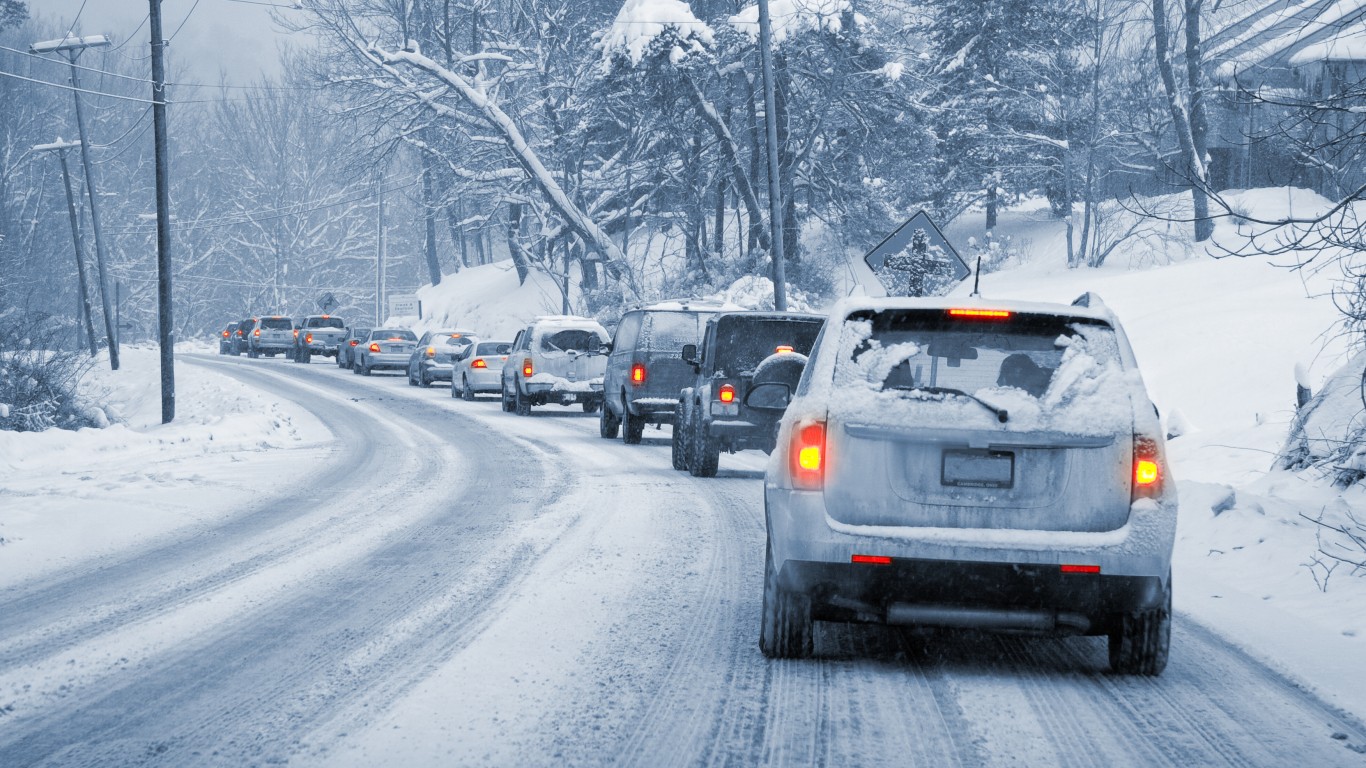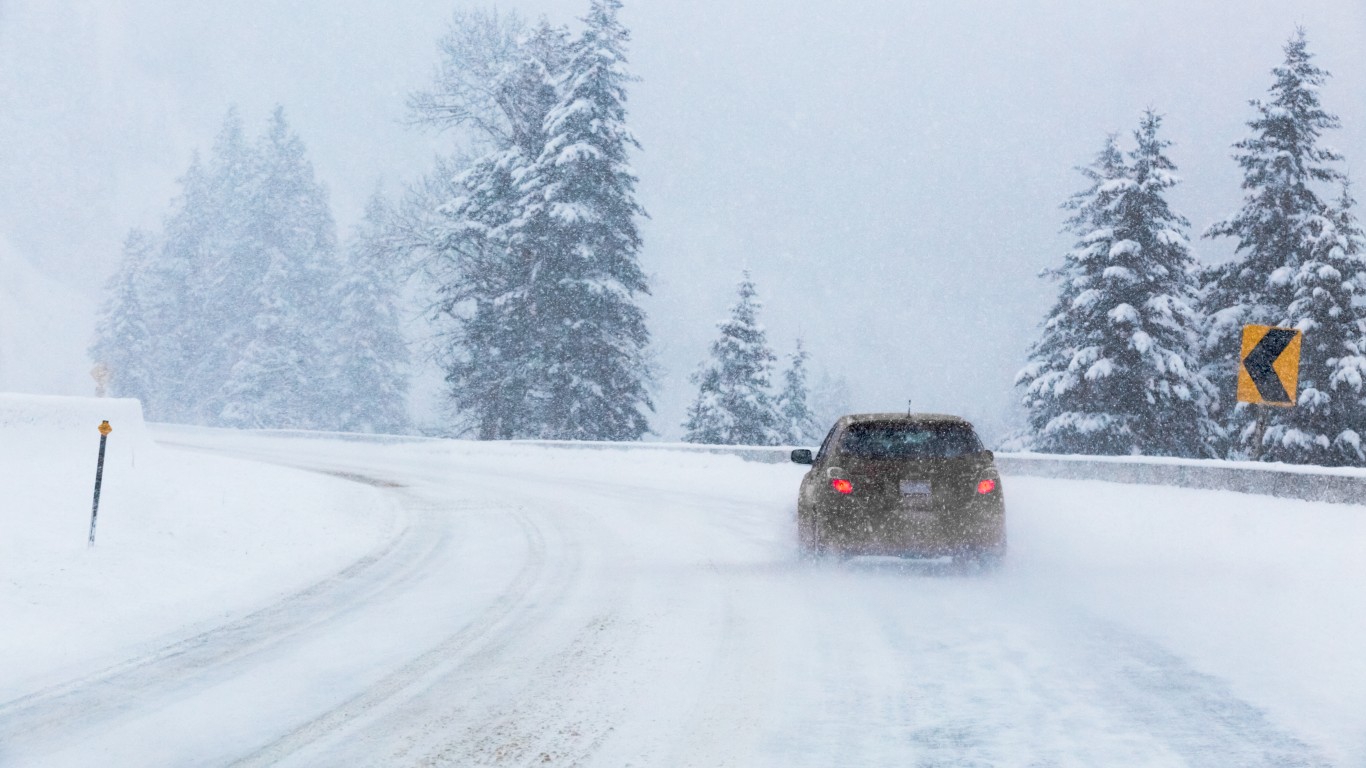
Imagine what went through the mind of the first person to gaze upon the Grand Canyon. Many natural wonders existed long before humankind ever laid eyes on them, and many are probably yet to be discovered.
24/7 Tempo compiled a list of 45 amazing places you never knew existed. These lesser-known locales consist of natural formations, man-made marvels, and rare or strange occurrences that should invigorate your sense of adventure.
Some of these places are so remote that they have remained hidden gems, only witnessed by locals and the most determined of explorers. Others were built by creative people who wished to imbue the world with mystery. No matter how they came to be, these places may inspire you to look around and seek out the marvels in your neck of the woods.
Beauty can be found in the most unlikely of places — here are the must-visit hidden parks in America’s 25 biggest cities — and luckily, you don’t have to visit all to see them but can experience many through the photographs of other avid explorers.
Click here to see 45 amazing places you probably never knew existed.
Methodology
To compile a list of 45 amazing places that are not very popular (yet), 24/7 Tempo reviewed travel magazines such as National Geographic Traveler and travel blogs. We picked places that vary from man-made structures such as unique hotels to naturally formed lakes in national parks. We aimed for a list that represents all seven continents.
Red Sand Beach, Maui, Hawaii
Red Sand Beach, or Kaihalulu Beach, in Maui, Hawaii is a hidden cove only accessible by trekking along a dangerous, slippery trail that follows steep cliffs. Once there, this hidden gem is a colorful feast for the eyes. The beach, with its red sand, is surrounded by rusty red cliffs and black lava rocks. The ocean outside the cove is a pristine deep blue.
[in-text-ad]

Zhangye Danxia Landform Geopark, China
These striped hills in Gansu are known as the Rainbow Mountains of China. The sandstone deposits contain iron and other minerals that lend the landscape their colors. The formerly horizontal strata became diagonally striped mountains when two tectonic plates collided 55 million years ago.
Beer Can House, Houston, Texas
An estimated 50,000 beer extend over the exterior of this home in Houston. In 1968, starting with his lawn, retired upholsterer John Milkovisch began covering every inch of his property with various items, including rocks, marbles, and pieces of metal such as beer cans.

Malabar Coast, India
Along India’s southwestern shore are a series of sand dunes, lagoons, and inland waterways known as the Malabar Coast. The coastal plain is 15 to 60 miles wide and is laced with brackish water channels that are navigable by small boats.
[in-text-ad-2]
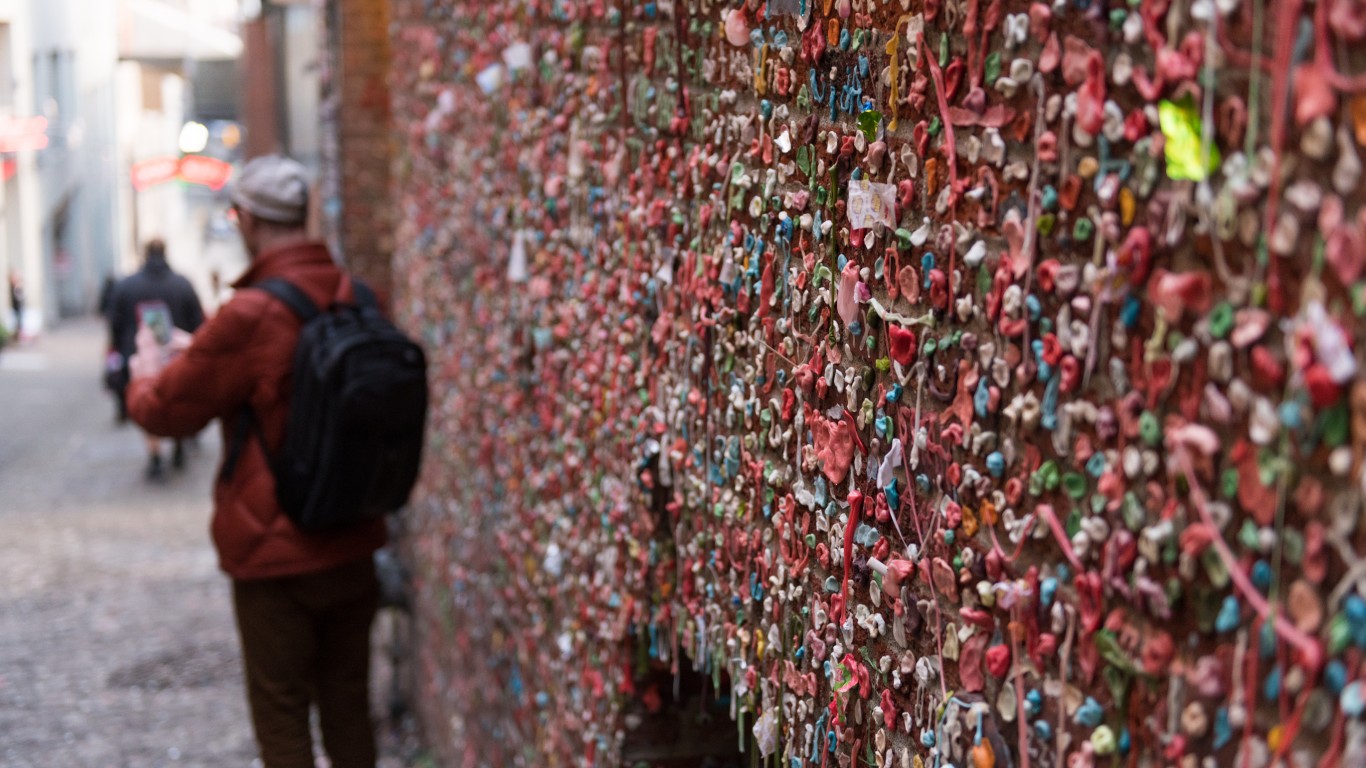
Market Theater Gum Wall, Seattle, Washington
It started in 1993 as a small stretch of wall that people began sticking their used gum to while waiting in line for a comedy show. The gum wall now stretches for over 50 feet on both sides of Post Alley and is now an unlikely top tourist attraction. Despite being cleaned once a year, the wall continues to draw tourists seeking to leave their wad and take a selfie.
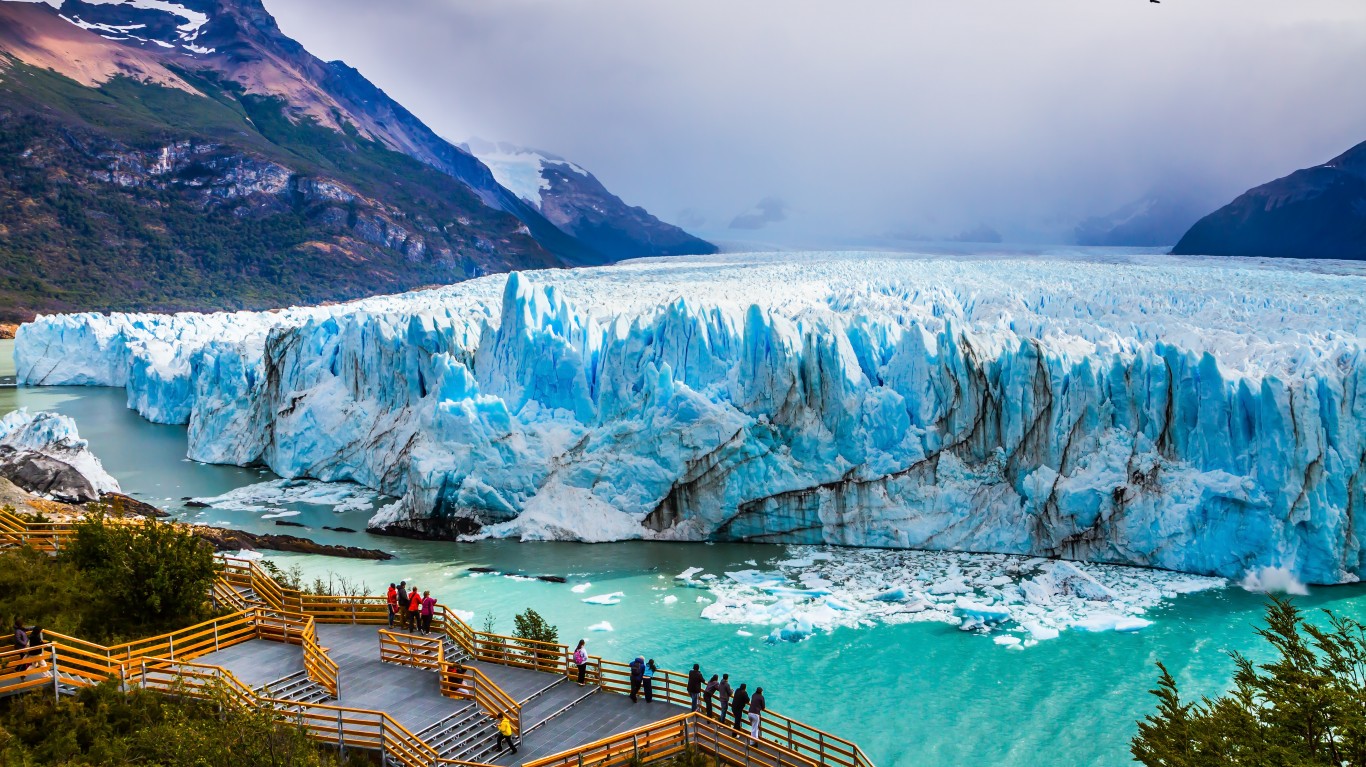
Perito Moreno Glacier, Argentina
Unlike most glaciers on Earth, Perito Moreno Glacier in Patagonia, Argentina, is still growing. At 19 miles long and an average of 240 feet high, the glacier covers 121 square miles and continues to expand. It is common for massive pieces of the glacier to fracture and crash into the water beneath, creating an epic spectacle for visitors.
[in-text-ad]
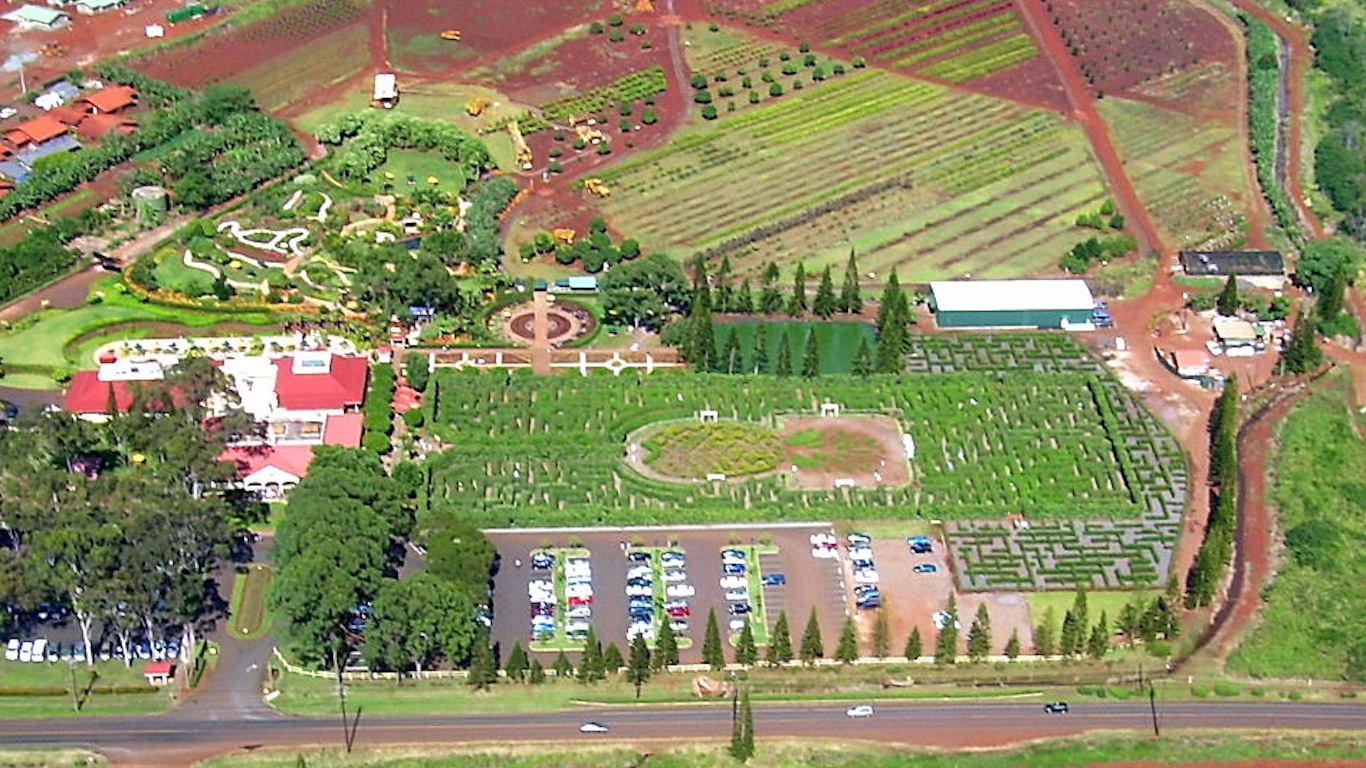
Dole Plantation’s Giant Pineapple Garden Maze, Wahiawa, Hawaii
Once the largest maze in the world, this tropical plant garden covers over 3 acres and contains nearly 2.5 miles of pathways. The maze is made of 14,000 iconic Hawaiian plants, including pineapples, hibiscus, and crotons, and the center is in the shape of a pineapple.

Glass Beach, Fort Bragg, California
What started as an unofficial town dump site in the early 1900s is now a beach covered in sea glass. Cleanup efforts began in the ’60s, and in 2002, Glass Beach became part of MacKerricher State Park in California. Visitors are welcome to enjoy the weathered glass and trinkets, but removing glass or other treasures from the beach is prohibited.

Nuclear Waste Adventure Trail, Weldon Spring, Missouri
Formerly the site of an explosives factory and then a uranium refinery, this man-made hill in Missouri is an entombed hazardous waste site. After 15 years of cleanup and hundreds of millions of dollars spent, the Disposal Cell is now considered a safe recreational area and is a popular spot for birdwatchers and stargazers.
[in-text-ad-2]

Lake Abraham, Alberta, Canada
Frozen bubbles of methane fill this ice-covered lake in winter, creating a surreal landscape that draws photographers to this Rocky Mountain locale in Alberta, Canada. The bubbles are created when bacteria consume decaying organic matter and release methane as waste, which becomes trapped in the frozen lake.
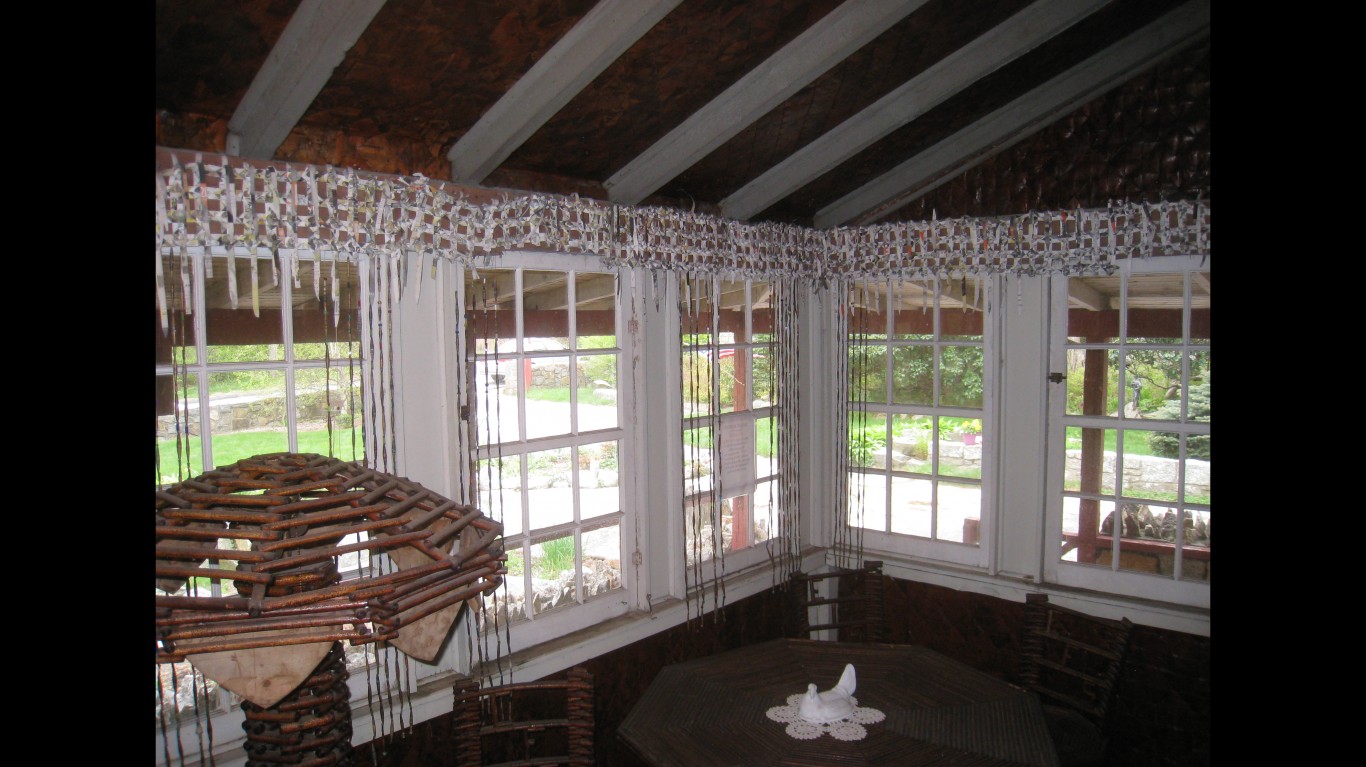
Paper House, Rockport, Massachusetts
Beginning in 1922, mechanical engineer Elis F. Stenman began constructing his home out of traditional materials. When he got to the walls, he decided to try using newspaper. By the time he was done and moved out in 1930, the walls, furniture, and doors were fashioned out of 100,000 newspapers. The Paper House is now a museum that is tourable by donation.
[in-text-ad]

Skeleton Coast, Namibia
Extending for about 300 miles along the western coast of Namibia is a treacherous, barren shoreline that has claimed over 1,000 ships. Aside from the abandoned hulls of boats, the wild coastline bears no other signs of civilization. Sand dunes tower up to 300 feet along the shore, and leopards, giraffes, and elephants can be seen navigating the sand and waves.
Treehotel, Harads, Sweden
This Swedish hotel just outside the Arctic Circle, near the small, northern village of Harads, offers visitors a chance to stay in one of a variety of treehouse cottages, each designed by a different architect. The treehouses combine modernist and minimalist features and come in such eclectic designs as a birdnest, UFO, and reflective mirror cube.
Corn Palace, Mitchell, South Dakota
Although it has been rebuilt multiple times, the Corn Palace in Mitchell, South Dakota, was first erected in 1892 as a way to draw settlers to the self-proclaimed “Corn Capital of the World.” The concrete building’s exterior is decorated yearly with different murals made of corn ears and other grains and grasses.
[in-text-ad-2]
Door to Hell, Turkmenistan
The Darvaza gas crater, also known as the Door to Hell or the Gates of Hell, is a 230-foot wide hole in a natural gas drilling field that has been burning since 1971. The crater was formed when a Soviet drilling rig punctured a natural gas chamber and the ground collapsed under it, swallowing the rig. Fearing that poisonous gasses were being emitted, the workers lit the hole on fire — and it hasn’t stopped burning since.
[in-text-ad]
Reed Flute Cave, Guilin, China
Although it is named after the reeds growing outside the cave — reeds that can be fashioned into musical instruments — Reed Flute Cave’s draw is one of sight, not sound. The cavern of stone pillars, which was used by ancient humans and rediscovered during WWII, is now illuminated with multicolored lights and open to visitors.

Kolukkumalai Tea Estate, India
This 8,000-foot-high tea estate surrounded by rugged mountains and sweeping valleys is the highest elevation tea plantation in the world. Visitors come not only for the majestic green views, but also to witness the traditional seven-step process that turns fresh leaves into award-winning teas.
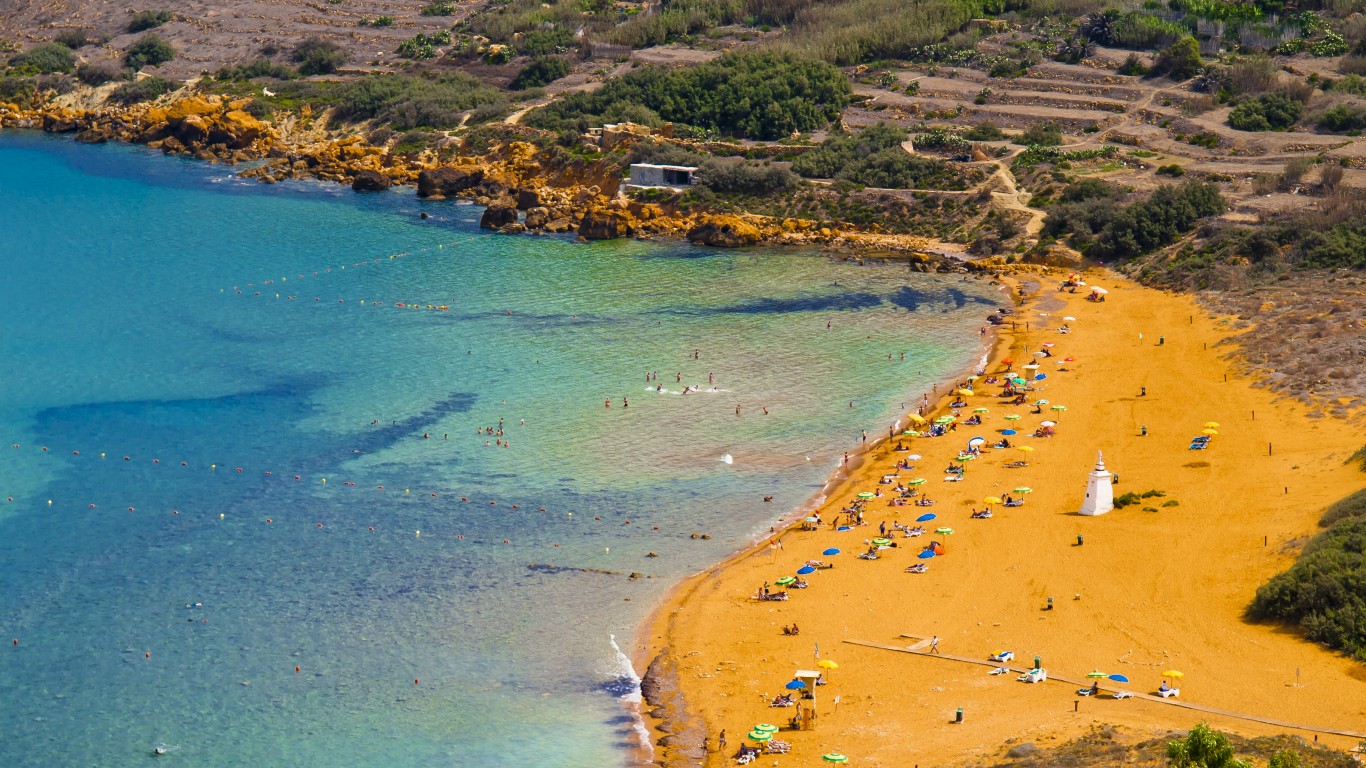
Ramla Bay, Gozo, Malta
The Mediterranean island of Gozo is the second largest island in the Maltese archipelago. While much of the shoreline consists of rocky cliffs or hills, the sandy cove of Ramla Bay, also called Ramla I-Hamra, is the largest sand beach on the north shore of the island. The turquoise waters fade to deep blue as the cove opens up to the sea.
[in-text-ad-2]
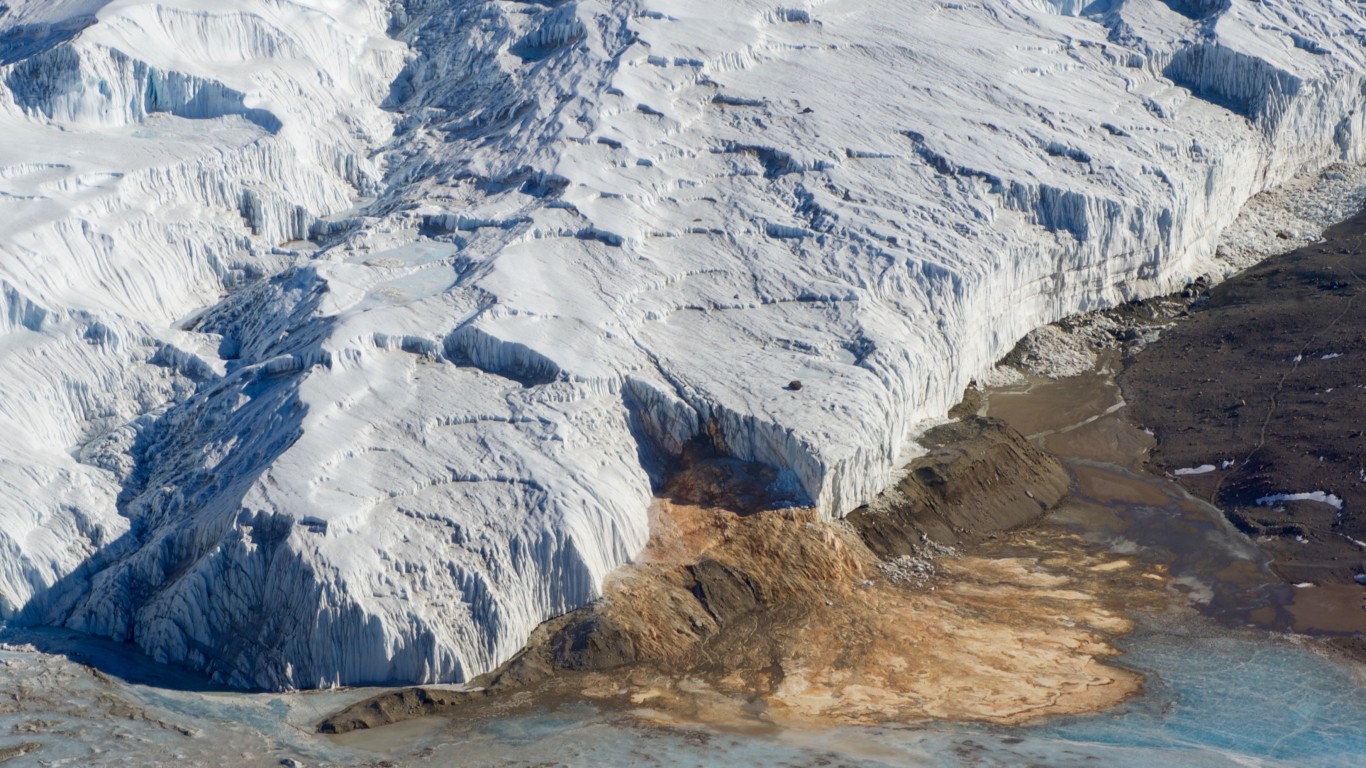
Blood Falls, Antarctica
Trapped beneath Taylor Glacier for two million years is an ancient lake that is rich in iron and is inhabited by rare microbes that have evolved independently from the outside environment. A small fissure in the glacier, discovered in 1911, allows a small amount of the lake to ooze out, creating a blood-colored waterfall that is five stories high.

Giant Crystal Cave, Mexico
This cave in Chihuahua was discovered by a mining company in 2000. The selenite crystals inside, the largest of which are 36 feet long, were formed over possibly hundreds of thousands of years until miners drained the cave and ventured inside. Visiting the cave is unfortunately nearly impossible as the heat and 100% humidity pose a life-threatening danger to potential explorers.
[in-text-ad]

Crooked Forest, Poland
This bizarre pine forest in Poland consists of 400 trees, all mysteriously bent at the base, forming curved trunks that eventually turn upright. One plausible theory as to their shape is that they were trapped under a heavy layer of snow early in their growth. Another is that local foresters attempted to curve the trees in order to use the bent wood to make furniture.
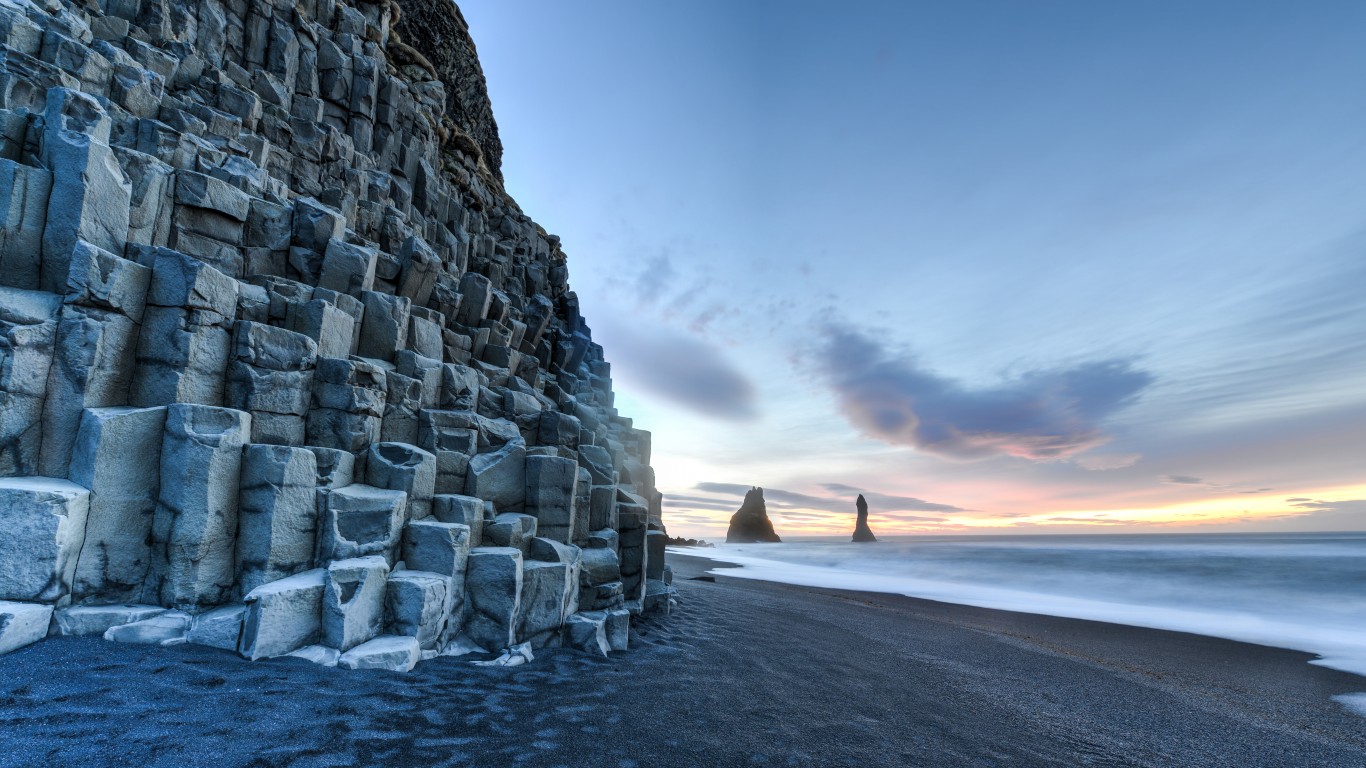
Reynisfjara Beach, Iceland
Outside the village of Vík í Mýrdal on the southern coast of Iceland is the Reynisfjara black sand beach. The beach is lined with massive volcanic formations called basalt columns that house thousands of nesting seabirds, including puffins. Visitors should beware of riptides and large, dangerous waves that randomly reach much further up the shore than expected.

Banaue Rice Terraces, Philippines
Built over 2000 years ago by the Ifugao people, the Banaue rice terraces are a vast network of irrigated rice paddies — many of them still in use — that span several villages. The terraces resemble giant stairsteps carved into the mountains and are estimated to cover 4,000 square miles.
[in-text-ad-2]
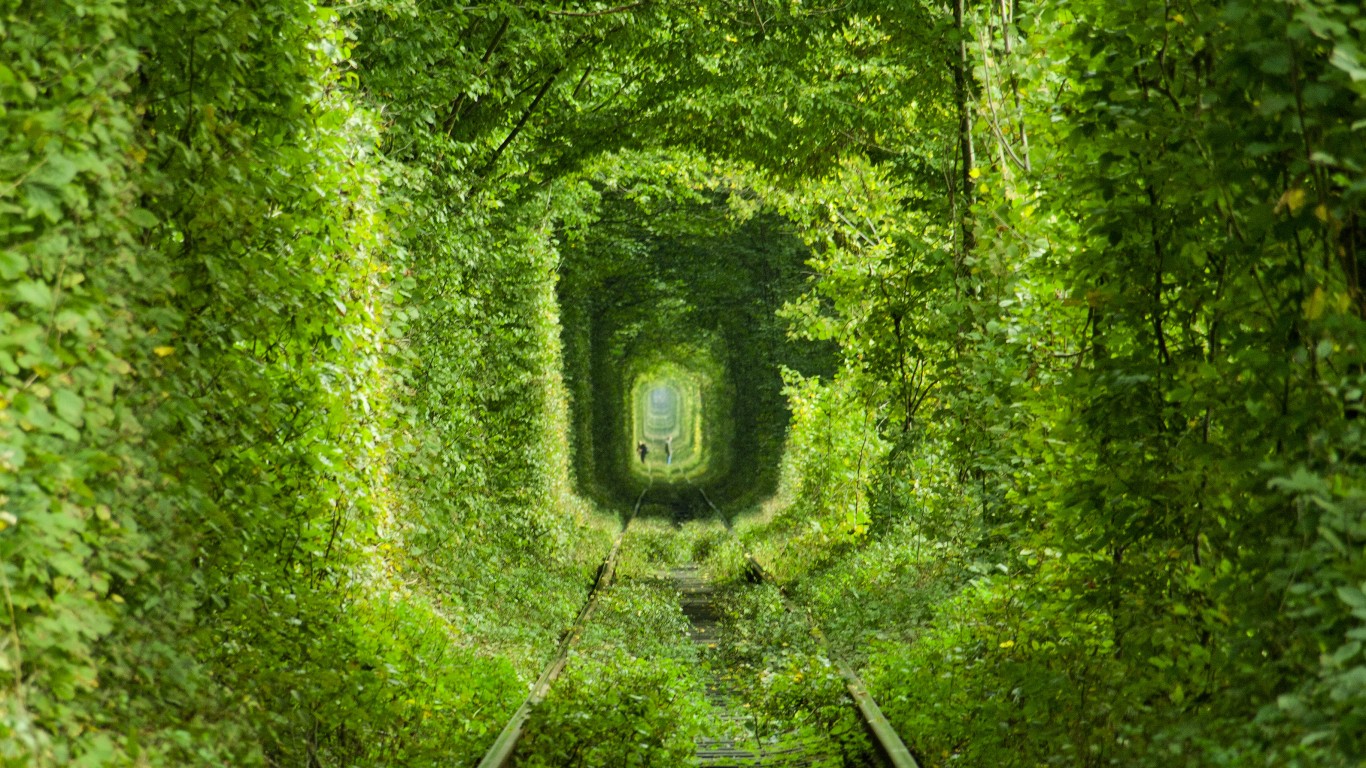
Tunnel of Love, Klevan, Ukraine
This two-mile section of railroad tunnel outside of Klevan, Ukraine, is surrounded by foliage. According to local lore, lovers of pure intentions will be granted a wish if they visit the tunnel. Trains run through the tunnel three times a day, but at other times, the tunnel is an enchanted place to take a stroll.

Zlatni Rat, Croatia
Zlatni Rat, which means Golden Cape or Golden Horn, is known as one of the most beautiful beaches in the Mediterannean. The golden sand beach juts out into turquoise waters that change to deep blue as they recede from the shore.
[in-text-ad]

Rakotzbrücke Devil’s Bridge, Gablenz, Germany
Commissioned in 1860, this half-circle bridge was built as an aesthetic monument to reflect in the water beneath and appear to form a full circle. It is decorated with stones intended to resemble basalt columns. Visitors are prohibited from walking on the bridge, and as of August 2019, it is reported to be under construction.
Free Spirit Spheres, Vancouver Island, Canada
Treehotel in Sweden is not the only treehouse hotel in the world. Free Spirit Spheres in the coastal rainforest of Vancouver Island, Canada, boasts three small, circular pods suspended from the trees that can be rented out nightly.
Richat Structure, Mauritania
This 28-mile wide geologic structure in the Sahara Desert is visible from space and resembles a bullseye. It was once thought to be a crater, but geologists now believe it is the remains of a geological dome that has been eroded to expose the rock layers underneath.
[in-text-ad-2]

Fly Geyser, Nevada
This colorful water spout on Fly Ranch, Nevada, began forming in 1964, when a geothermal power company drilled a test well at the site and failed to properly cap it. Hot water containing calcium carbonate has been spewing from the hole ever since, leaving deposits that grow a few inches every year and are currently nearly six feet tall.

Seven Rila Lakes, Bulgaria
These seven glacial lakes in Bulgaria’s Rila National Park are surrounded by mountains with jagged peaks. They sit at elevations between 6,800 and 8,200 feet and are connected to one another by small streams. In order to visit them all, hikers should plan on at least a six-hour round trip.
[in-text-ad]

Sagano Bamboo Forest, Kyoto, Japan
About half an hour from the urban center of Kyoto is the enchanting Sagano Bamboo Forest. The sound of the bamboo stalks creaking and leaves rustling has been governmentally declared one of the “100 Soundscapes of Japan.” Unfortunately, the area has become so often inundated with tourists and photographers that visitors rarely experience the meditative peace that the forest used to offer.

Moravia, Czech Republic
First inhabited by the Celts, various Germanic tribes, and then the Slavs, Moravia was once the administrative center of a medieval kingdom. It is now a tourist destination that boasts multiple historic cities, featuring intact medieval architecture, town squares, and castles.

The Nazca Lines, Peru
The Nazca lines are a series of huge geoglyphs created by the Nazca people around 2,000 years ago. Best visible from the air, the patterns depict over 70 animals and plants, as well as other various geometric shapes. Some glyphs are 1,200 feet long, and new lines are continuously being discovered.
[in-text-ad-2]

Lake Retba, Senegal
Also known as Lac Rose, Lake Retba is a saline lake with a vivid pink hue caused by a bacteria that thrives in the saline waters. Other lifeforms are rare in the lake, but its salt is harvested by locals and used to preserve fish. The color is most vivid from November to June, which is the area’s dry season.

Kuang Si Falls, Luang Prabang, Laos
The remote falls of Kuang Si in Laos are characterized by a series of stone-lined travertine pools etched out by waterfalls. The pools are smaller near the beginning of the falls and wider (and swimmable) near the bottom. Locals charge a small entrance fee and have built a wooden observation deck on site.
[in-text-ad]
The Palouse, Idaho and Washington
The Palouse is an area in Idaho and Washington of gentle rolling hills resembling sand dunes that were created by tens of thousands of years of glacial rock dust and silt blowing into the area. Much of the hills are now covered in wheat and barley fields that range from green in spring to gold and brown in late summer. Vineyards are also beginning to become a prevalent part of the landscape.
The Racetrack, Death Valley National Park, California
The Racetrack is home to the moving rocks of Death Valley. These rocks have intrigued scientists and visitors for decades by mysteriously traveling without apparent human intervention and leaving long trails in the cracked, dry, earth. In 2013, researchers finally solved the mystery after witnessing the rocks moving as a result of winter rains. Pools of rainwater began to freeze, forming thin layers of surface ice that eventually broke into sheets that could float and move in the wind, shoving the rocks in front of them.
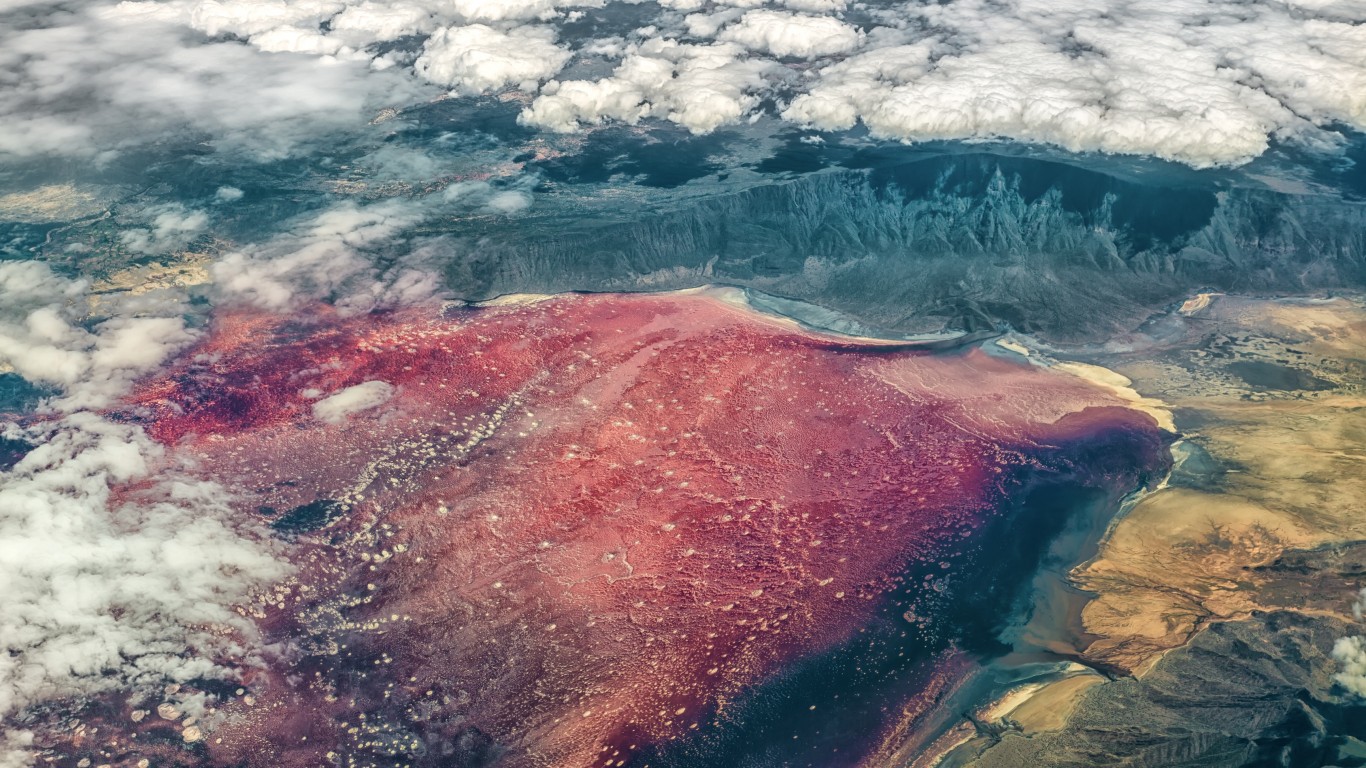
Lake Natron, Monduli, Tanzania
A seeming hell on earth, Lake Natron in Tanzania is a salt lake nearly as alkaline as ammonia, with a fiery red hue due to cyanobacteria that thrive in the hot water, which can reach 140 degrees Farenheit. The alkaline waters corrode most objects that come into contact with them, including birds who mistakenly crash into the glass-like surface. The calcified bodies of birds and other animals can be seen washed up along the shores, resembling stone replicas.
[in-text-ad-2]

Avenue of the Baobabs, Morondova, Madagascar
This small grove of 800-year-old baobab trees lining the road from Morondava to Belo Tsiribihina in Madagascar was once part of a dense forest. The remaining trees, some of which are 150 feet in circumference, are the focus of local preservation efforts and were granted a temporary protected status in 2007.
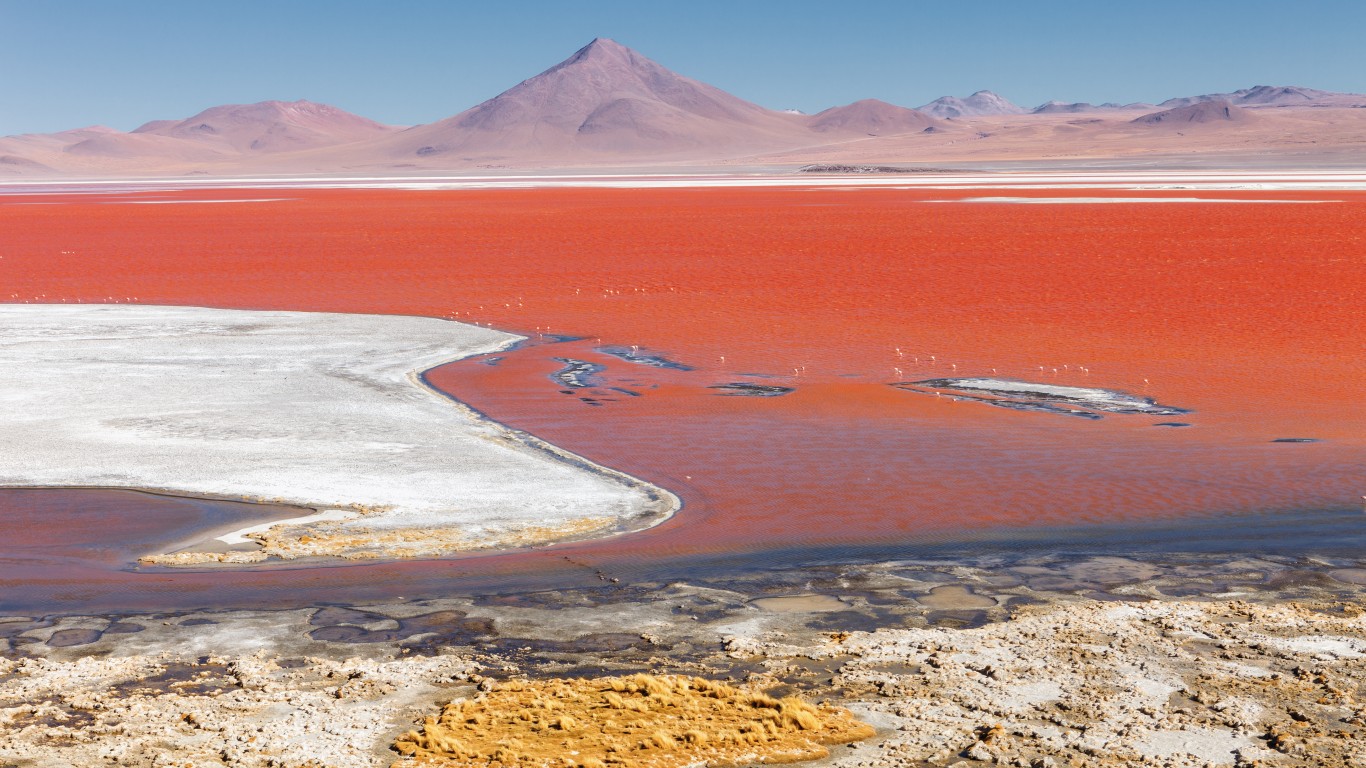
Laguna Colorada, Bolivia
This red salt lake in Bolivia, sitting at 14,000 feet above sea level, is flecked with white borax deposits and lined with contrasting dark blue. The water is only three feet deep, and the area is home to multiple flamingo populations, including the nearly extinct James’ flamingo.
[in-text-ad]
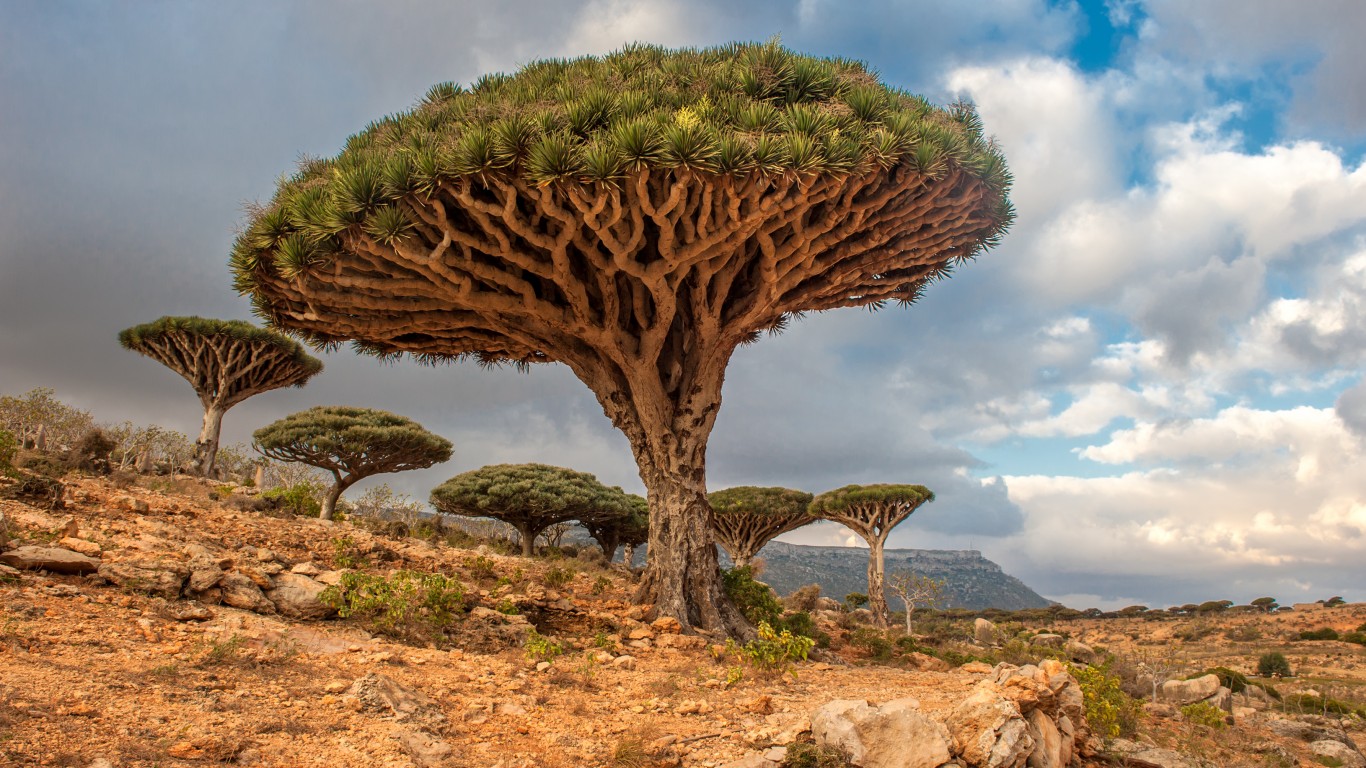
Socotra, Yemen
Socotra is a remote island off Yemen that is known for its unusual plant life, including the iconic dragon’s blood tree. A third of the island’s plant species are only found on Socotra. The island is believed by some to have been the Garden of Eden or the Sumerian paradise known as Dilmun.

Wisteria Flower Tunnel, Kitakyushu, Japan
From late April to mid May, the wisteria flowers bloom at Kawachi Fuji Gardens in Kitakyushu, Japan. In this private garden, 20 different species of wisteria grow around a tunnel, and their hanging flowers are celebrated during an annual Wisteria Festival at the end of April, open to visitors.
Mount Roraima, Venezuela, Brazil, Guyana
Mount Roraima is a massive plateau with sheer 1,300 foot cliffs on all sides. It is the highest mountain in Guyana’s Highland Range, which contains some of the oldest geologic formations known, dating back two billion years. Many plant and animal species on the plateau don’t exist anywhere else in the world.
[in-text-ad-2]
Caño Cristales, Colombia
Best viewed during June and November, this rainbow river in Serranía de la Macarena National Park in Colombia owes its seasonal color bursts to aquatic plants that thrive only when the water level is neither too high (which obscures the plants) nor too low (when it’s too dry for them to grow). Tourism is a threat to the delicate environment, and visitors are asked not to swim if they are wearing sunscreen or bug repellent.
Thank you for reading! Have some feedback for us?
Contact the 24/7 Wall St. editorial team.

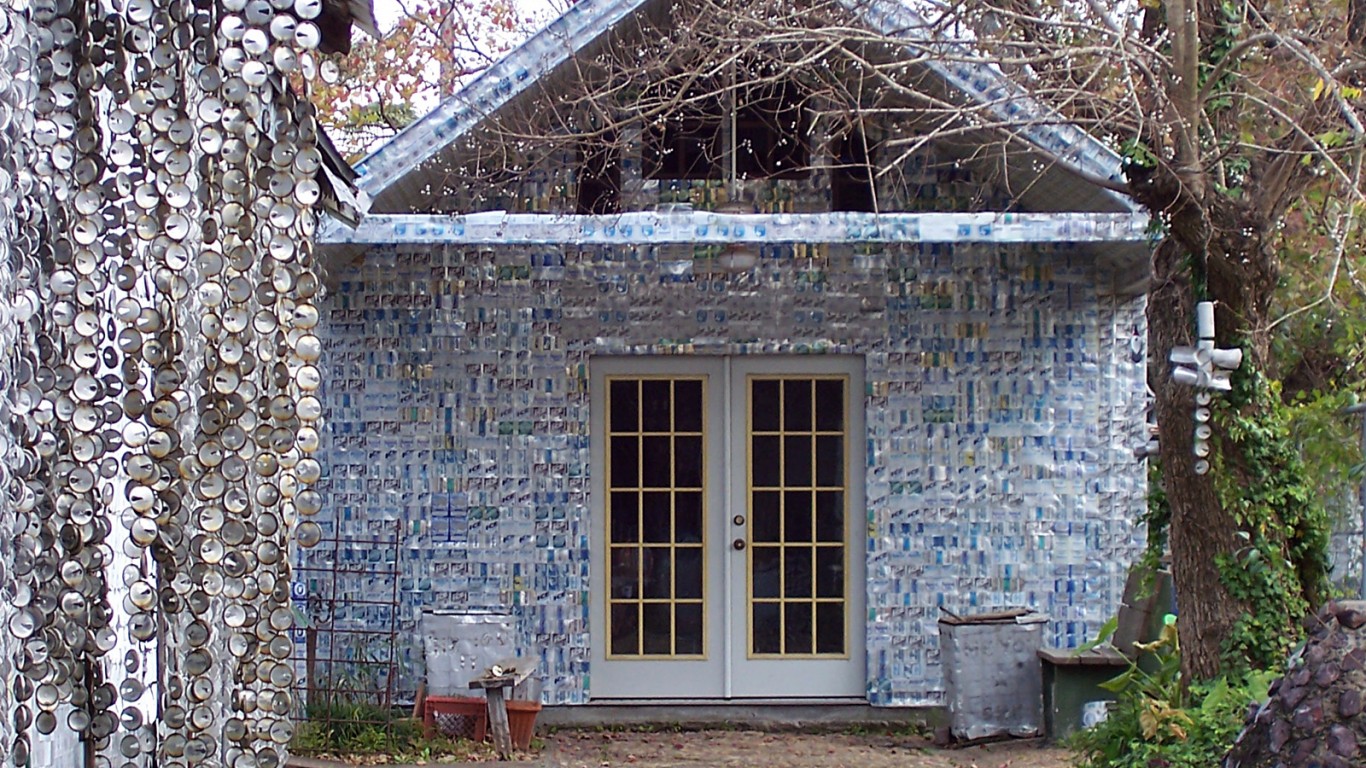
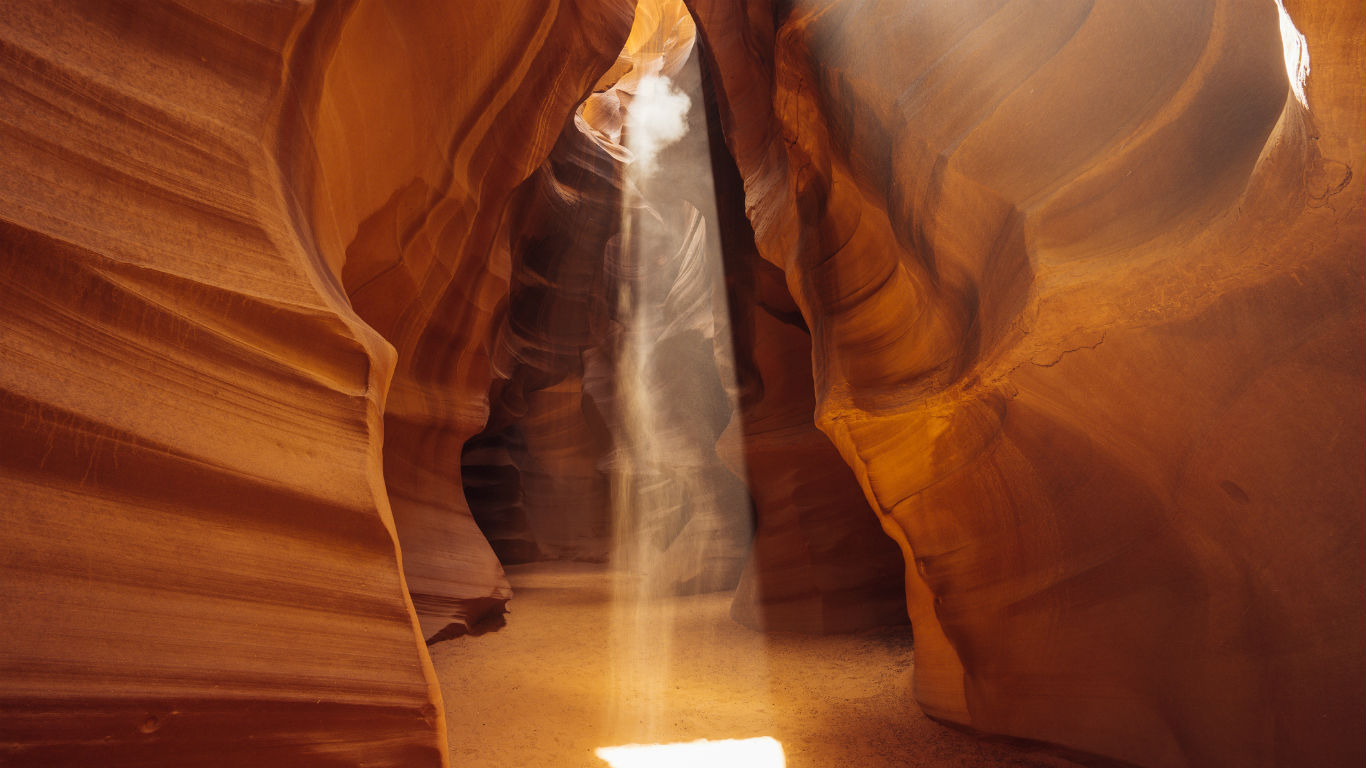 24/7 Wall St.
24/7 Wall St.
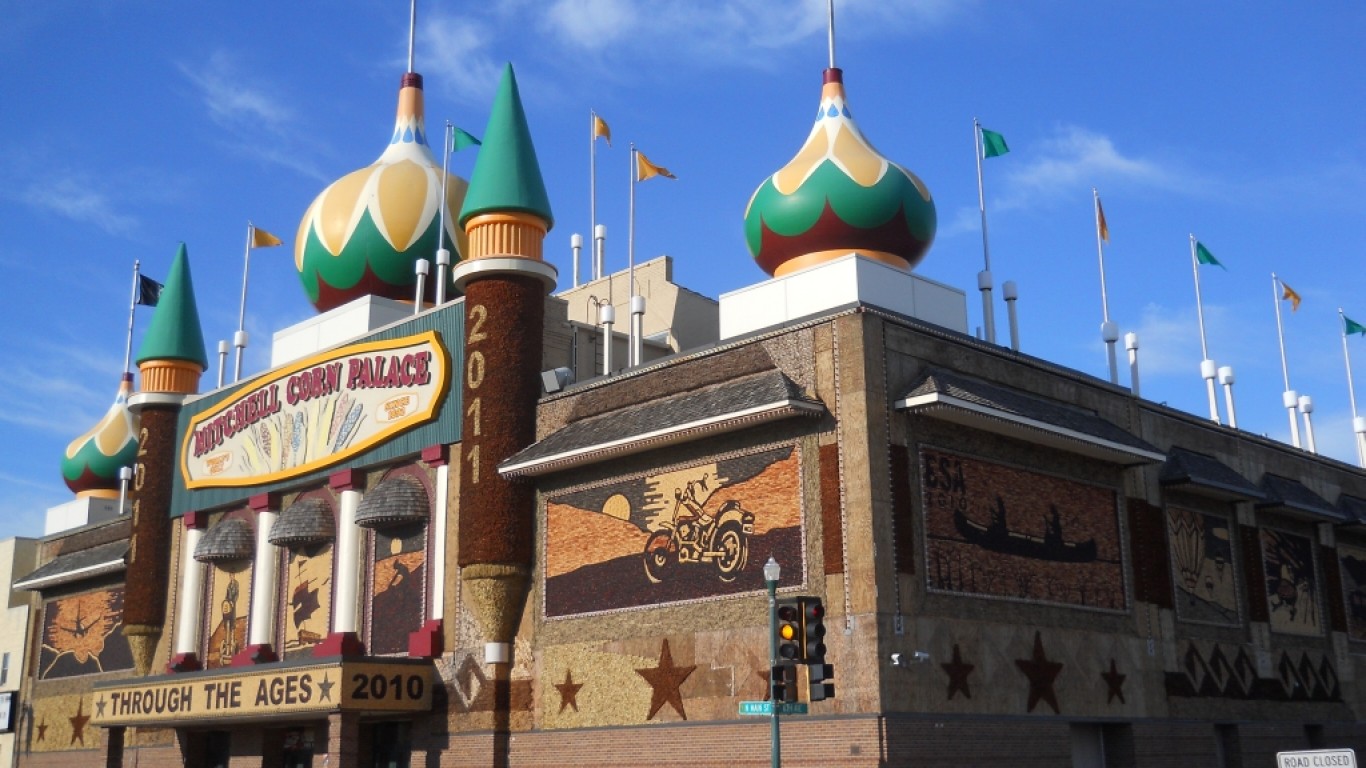

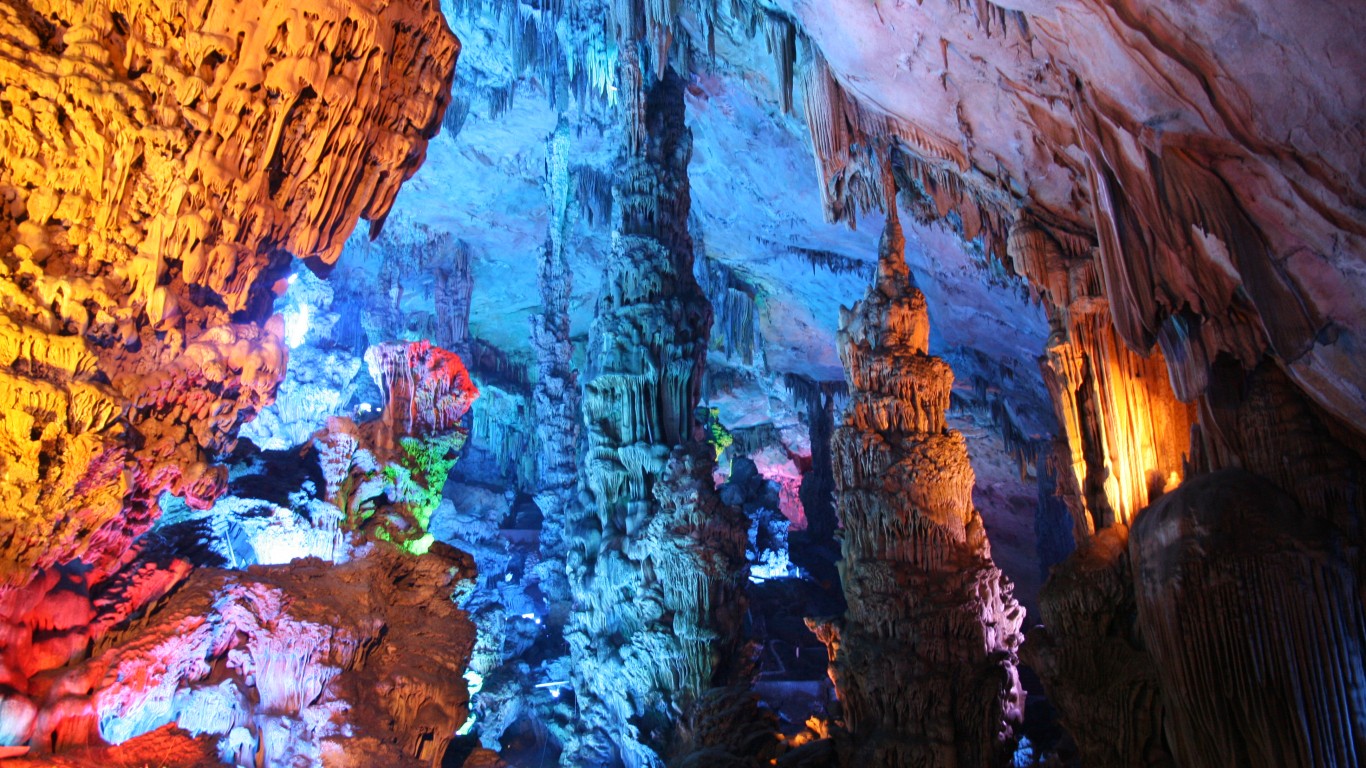
 24/7 Wall St.
24/7 Wall St.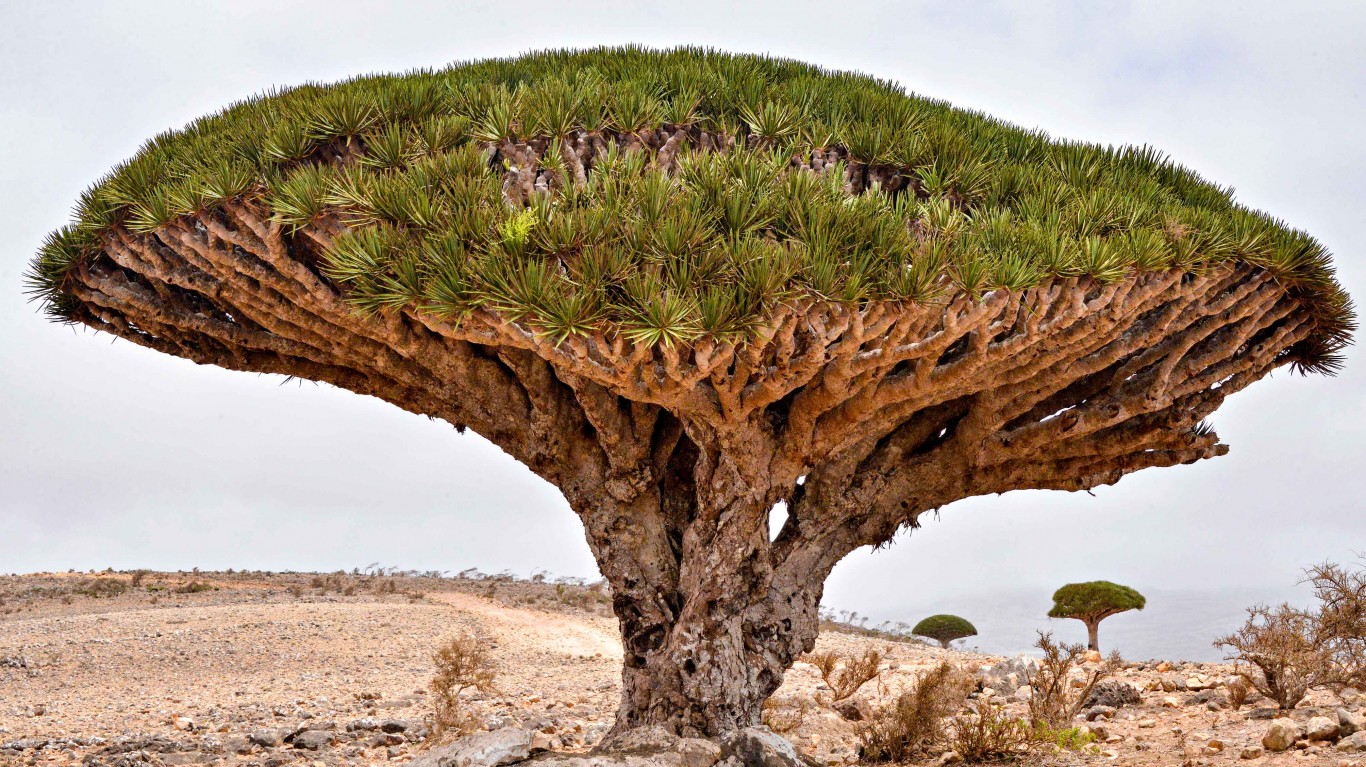 24/7 Wall St.
24/7 Wall St. 24/7 Wall St.
24/7 Wall St.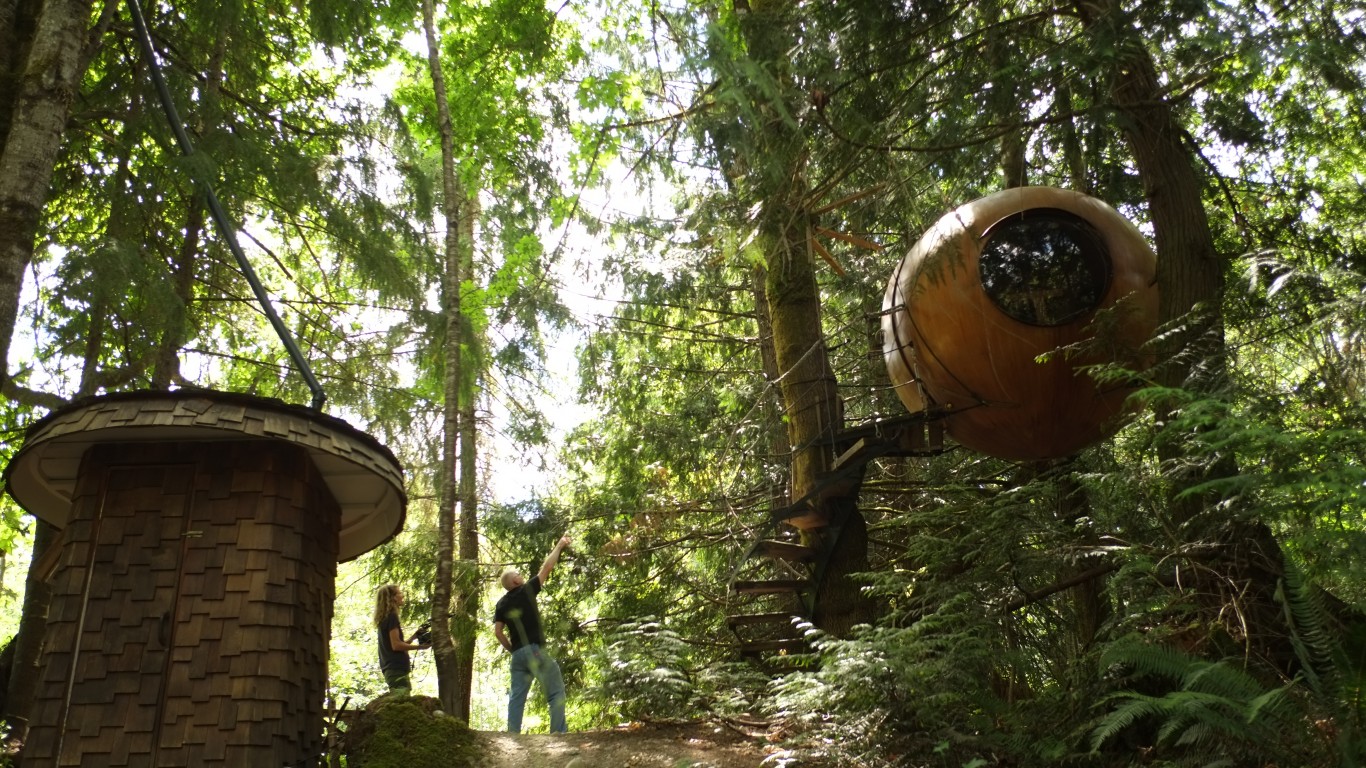

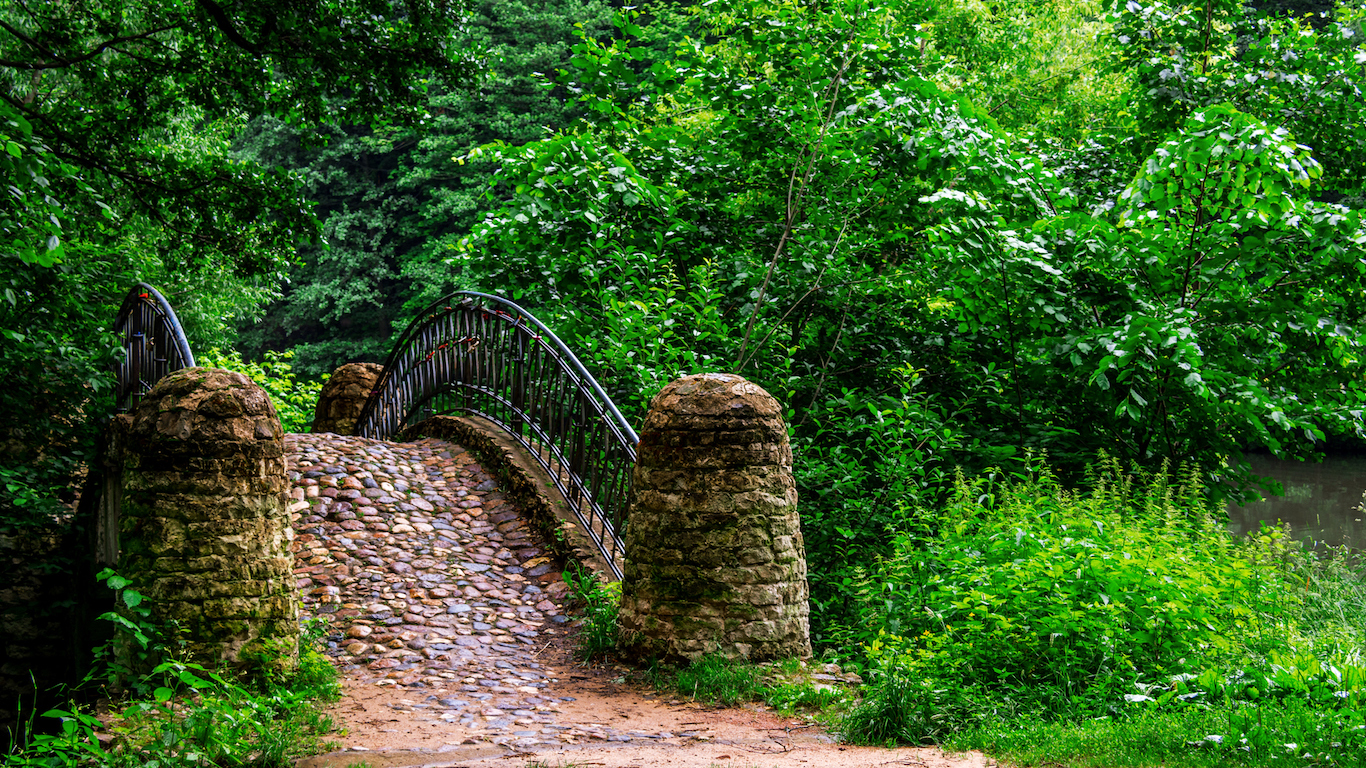 24/7 Wall St.
24/7 Wall St. 24/7 Wall St.
24/7 Wall St.
